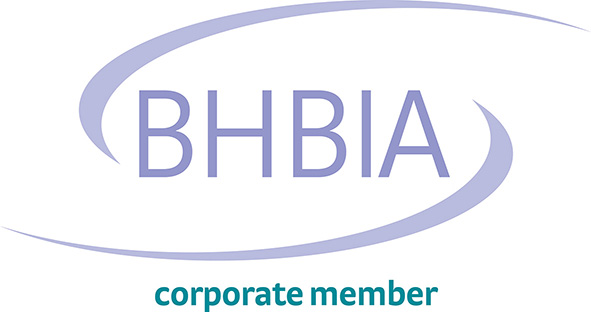Market Research Glossary
Market Research Glossary
There are currently 51 names in this directory beginning with the letter O.
Objectives
is a statement of purpose that outlines a specific result that a person aims to achieve within a specific time frame and with available resources.
Observation
Observation is a market research technique in which highly trained researchers generally watch how people or consumers behave and interact in the market under natural conditions.
Observation Bias
refers to changes in the behaviour or events under study that are caused by the observation process itself. Personal observation is usually more likely to have observation bias than mechanical observation.
Observation Research
It is designed to give precisely detailed and actual information on what consumers do as they interact in a given market niche.
Observation Room
An observation room, oftentimes referred to as a viewing room, is used in a focus group facility for purposes of qualitative market research. Observation rooms allow researchers and clients to sit and watch focus groups or in-depth interviews through a one-way mirror.
Observation Study
It is a research study where data is collected by watching consumer behaviour or events taking place.
Observed Value
in a cross-tabulation is the number of objects identified by research (which may be different to the expected value).
Occasion Image
It is the impression created, either explicitly or implicitly, of the types of occasion for which a brand is perceived to be most appropriate
Omnibus Panel
An omnibus survey is a method of quantitative marketing research where data on a wide variety of subjects is collected during the same interview. An omnibus survey generally uses a stratified sample and can be conducted either by mail, telephone, or Internet.
Omnibus Study
is a periodic study that asks questions on a number of unrelated subjects. The results may be completely or partially syndicated among clients.
Omnibus Survey
An omnibus survey is a method of quantitative marketing research where data on a wide variety of subjects is collected during the same interview.
On-Air Test
Research participants are exposed to some advertising in a natural setting, such as their own homes.
One Group Pre-Test - Post-Test
It is a type of pre-experimental design where a single group of test units is measured, exposed to an experimental treatment and then measured again.
One-Group Pre-Test Post-Test Design
A one-group pretest-posttest design is a quasi- experimental research design in which the same dependent variable is measured in one group of participants before (pretest) and after (posttest) a treatment is administered.
One-on-One Interview (1-on-1)
The one-on-one interview serves as a complement to the focus group and offers an interesting analytical methodology for collecting qualitative data about the purchasing experience and for better understanding what motivates consumers.
One-on-Ones
A type of qualitative research involving an unstructured personal interview with a single respondent, conducted by a highly skilled interviewer. The purpose of in-depth interviews is to understand the underlying motivations, beliefs, attitudes, and feelings of respondents on a particular subject.
One-Shot Case Study
It is a type of pre-experimental design where a single group of test units is exposed to an experimental treatment and a single measurement is taken afterwards
One-Sided Question
It is a form of a leading question that presents only one aspect of an issue being considered by respondents
One-Stage Sampling
It is a sampling procedure that involves collecting data from all available units in selected sub-groups of a population of interest.
One-Tailed Test
It is a test where the null hypothesis is expressed directionally, e.g. the proportion having a characteristic is more than x%. One-tailed tests are more popular than two-tailed tests because the directional result makes the findings more actionable.
One-Way Frequency Table
A one-way table is the tabular equivalent of a bar chart. Like a bar chart, a one-way table displays categorical data in the form of frequency counts and/or relative frequencies . Below, the bar chart and the one-way table display the same data.
One-Way Mirror
It is a sheet of glass which, when viewed from one side, appears to be a normal mirror and when viewed from the other side, is transparent. It is used in Marketing Research to observe respondents without their being constantly reminded that they are being watched, although they have to be advised by the researcher that they are being observed. A one-way mirror is often used in focus group discussions.
Online Discussion Group
is where a number of pre-recruited research participants are in simultaneous electronic contact (via a PC) and they are discussing a particular subject. The discussion is guided by a moderator and the participants are unable to see each other, therefore no visual signals can be communicated although anonymity can be assured
Online Profiling
The tracking of a consumer's online activities over time – including the searches the consumer has conducted, the Web pages visited, and the content viewed – in order to .
Open Ended Question
are questions that do not have a set of anticipated responses listed on the questionnaires. The interviewer records the respondent's verbatim response. When the survey is interviewer-administered, the respondent is encouraged to respond completely and freely with the use of probing and clarifying techniques. These questions may also be self-administered.
Open-Ended Questions
Open-ended questions are free-form survey questions that allow respondents to answer in open text format so that they can answer based on their complete knowledge, feeling, and understanding.
Opening Questions
are the questions at the beginning of a questionnaire and they should be interesting, simple and non-threatening to gain the confidence and co-operation of respondents.
Operational Definition
An operational definition is how we (the. researcher) decide to measure our the variables.
Opportunities to See (OTS)
refers to an advertising campaign and the number of exposures or opportunities which a particular audience has to see a specific advert.
Opt-In
Opt-in marketing is a form of permission marketing in which there is a formal opt-in process for receiving follow-up communication, offers, etc.
Opt-Out
refers to several methods by which individuals can avoid receiving unsolicited product or service information.
Optical Character Reader (OCR)
is the technology used to distinguish printed or handwritten text characters within digital images of physical documents like scanned paper documents.
Optical Scanner
Optical scanners and digitizers are non-contact metrology systems which and which makes use of white light or laser-based scanning technique.
Optimal Allocation
is the allocation of sample units to strata so as to maximise the statistical efficiency of the survey.
Optimum Allocation
Optimal allocation is a procedure for dividing the sample among the strata in a stratified sample survey. ... A sample survey collects data from a population in order to estimate population characteristics.
Order Bias
occurs when respondents tend to favour objects because of their position in a list or sequence. The objects at the beginning and at the end of a list can be remembered more than those occurring in the middle. Usual practice is to rotate a list to eliminate this type of bias.
Ordinal Scale
is a scale where the numbers assigned represent relative amounts of the characteristic being measured, eg first or second in a ranking. The distances between intervals in an ordinal scale are usually not equal - ie the difference between the values of first and second is not the same as the difference between third and fourth in a ranking.
Osgood Scale
A type of categorical, non-comparative scale with two opposing adjectives separated by a sequence of unlabelled categories, e.g. Good 1 2 3 4 5 6 7 Poor.
Out
The respondent decides not to complete the interview and will cooperate no further. Also referred to as outed.
Outlier
are extremely small or extremely large values in a set, compared with the mean of all values in the set.
Outliers
An outlier, as the term suggests, means an observation in a sample lying outside of the "bulk" of the sample data. ... The outliers that have the most impact come from sample units that have a large sample value coupled with a large sampling weight.
Outmigration
Process of relocating from a particular location in a given country to a different area within that same country.



